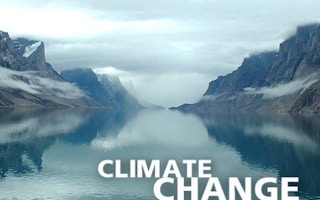The goal of limiting global warming to 2 degrees Celsius is still possible but the costs are rapidly increasing as countries delay reducing greenhouse gas emissions, according to the United Nations Environment Programme.
In its Emissions Gap Report 2012, released Wednesday, the UNEP noted that failure to act quickly on emissions reductions will drive up the costs of climate mitigation by at least 10 to 15 per cent after 2020.
“This report is a reminder that time is running out, but that the technical means and the policy tools to allow the world to stay below a maximum 2 degrees Celsius are still available to governments and societies,” said executive secretary of the UN Framework Convention on Climate Change Christiana Figueres in a statement.
The report comes just before the beginning of new round of global climate talks in Doha, Qatar, at which countries will face pressure to increase their immediate climate targets and pave the way for a new global agreement on climate change to take effect in 2020.
Annual greenhouse gas (GHG) emissions are currently about 14 per cent higher than the level targeted for 2020, and despite global efforts to curb them, the concentration of greenhouse gases are on the increase. GHGs have risen about 20 per cent since 2000, said the report.
Without new, more ambitious targets to reduce GHG emissions, the world will face a gap of 8 gigatonnes (Gt) of CO2 equivalent by 2020 even if it manages to meet existing goals, noted the report.
The report outlined a path for closing this gap, with the largest reductions coming from the power, agriculture, forestry, building and transportation sectors.
UNEP executive director Achim Steiner said that nations had provided many inspiring actions to reduce emissions within these sectors as well as in avoided emissions from deforestation. He urged governments to help scale these up by putting “their foot firmly on the action pedal by fulfilling financial, technology transfer and other commitments under the UN climate convention treaties”.
The report found that with potential emissions reductions of about 2.1 Gt by 2020 and more than 9 Gt by 2050, the building sector can use energy efficiency measures to close a significant part of the gap. However, to do this, the world’s biggest building markets will have to quickly implement stringent mandatory building regulations.
The UNEP and co-publisher, the European Climate Foundation, also noted in the report that the transport sector could narrow the gap by another 2 Gt by 2020 by focusing on better fuel efficiency and shifting people away from private cars.
To this end, seven countries – including Australia, China, the European Union, South Korea and the United States - have already introduced or proposed new standards that could halve emissions from light vehicles by 2025 from 2000 levels.
Eight of the largest development banks have also contributed to the effort with pledges of US$175 billion over the next ten years to fund improvements in public transport in developing countries.
The power sector has the potential to reduce emissions by 2.2 to 3.9 Gt by 2020, said the report.
Climate policy advisor for NGO Greenpeace International Kaisa Kosonen said in a separate statement that the power sector’s increased use of coal has caused more than two-thirds of the growth in global emissions and called on nations to stop the development of the 1,200 new coal-power plants that have been proposed world-wide.
He added the UNEP report was one more in a series of strong warnings from groups as diverse as the World Bank, the US Central Intelligence Agency and institutional investors that climate change poses a real threat to social and political stability.
“How many warnings both verbal and physical do we need before sanity prevails?” he asked.
In Doha, governments can and must maintain a robust international process free from loopholes, and beyond the climate talks, governments and business must focus on redirecting investments from fossil fuels to renewable energy and efficiency, he added.
“But the most important message that the UNEP report delivers is that we can still keep warming below dangerous levels,” said Mr Kosonen.

















